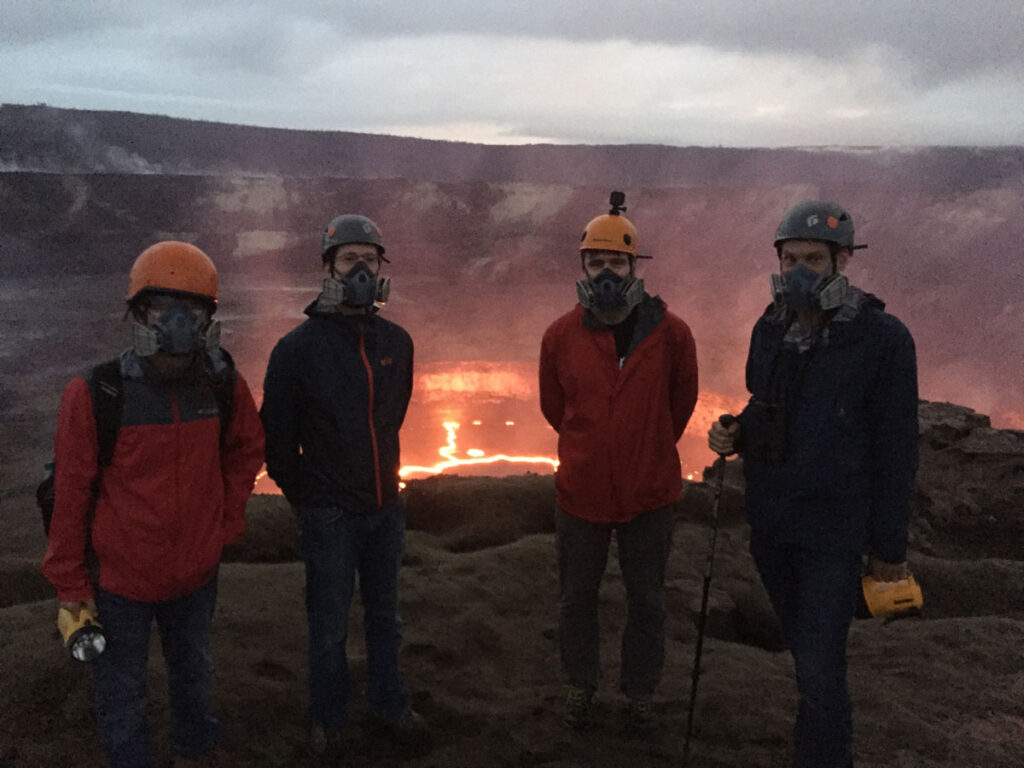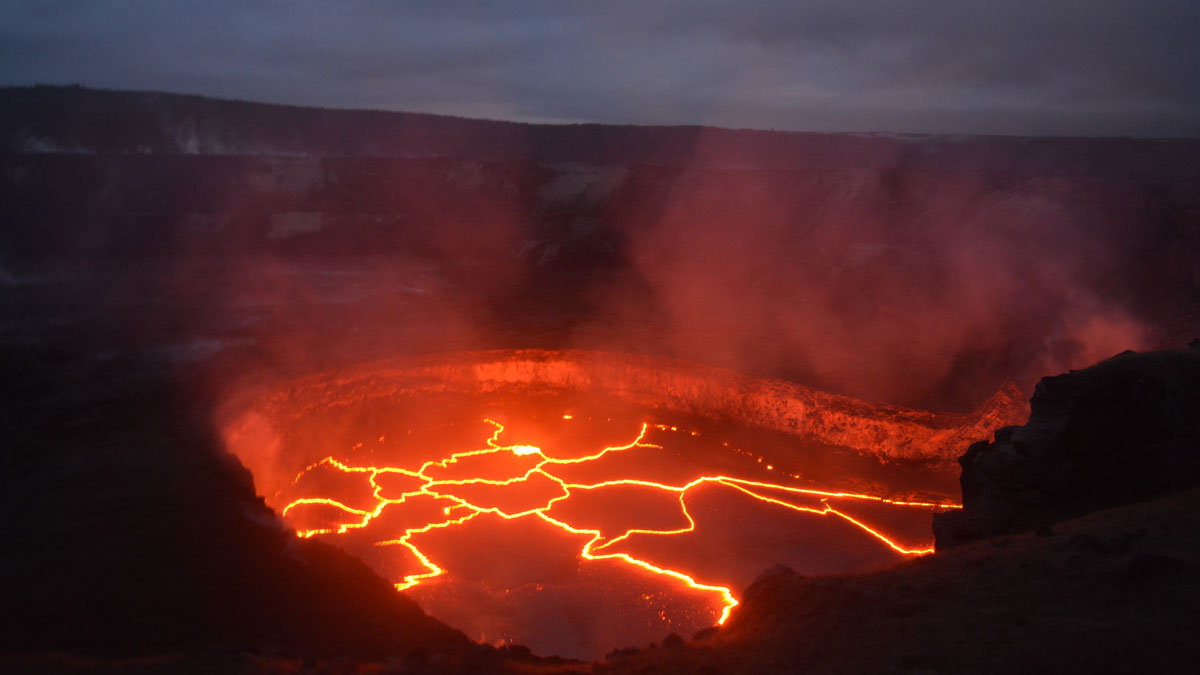Although there are around 1,350 potentially active volcanoes across the globe, only a handful feature lava lakes. One of those lava lakes resides in a crater of Hawaii’s Kīlauea volcano.
Kīlauea famously erupted in 2018, leading to the collapse of its summit. Preceding this eruption, the volcano showcased other, less dramatic eruptions, but there is still much unknown about what happened within the volcanic system leading up to these events.
New research published in Science Advances turned to Kīlauea’s lava lake for answers. The lake gives a direct window into the magma, said Josh Crozier, lead author of the new paper and a researcher now at the U.S. Geological Survey’s (USGS) California Volcano Observatory.
“A lava lake is like opening a manhole in the sewer system: We can see the pressure that’s built up and how fast it is flowing.”
“A lava lake is like opening a manhole in the sewer system: We can see the pressure that’s built up and how fast it is flowing,” Crozier said. “Once something physically disturbs the magma chamber or the lava lake, it sloshes around, and we can measure that with seismometers.”
The researchers carefully examined resonant signals collected by the Hawaiian Volcano Observatory from 2008 to 2018, which allowed them to deduce what was happening inside the volcano without directly probing the hazardous and extreme environment. Crozier and coauthor Leif Karlstrom, an Earth scientist at the University of Oregon, focused on “very long period” (VLP) signals, at frequencies below 5 hertz. These “much gentler and resonant shakings” are produced by other seismic signals made by volcanoes, according to USGS. The authors found that the resonance characteristics encoded in the seismic signals collected around Kīlauea are determined by the shape and properties of the volcano’s magma chamber, like temperature and gas content.
The volcano’s “plumbing system,” which keeps fresh magma coming into the lava lake, produces a seismic resonance somewhat analogous to the musical sound produced by a drum, said Karlstrom. “If you hit a drum, how long does it last before the sound stops? That’s determined by the shape of the drum and what’s inside,” Karlstrom, who is also a musician, said. “In the case of volcanoes, we’re using seismic displacement—not sound” to provide information about the volcano’s inner dynamics and characteristics.
The different kinds of seismic signals can be compared to various instruments in the “song” of information coming from a volcano, said Crozier. “That’s the thing we are still working on to understand,” he said. “We’ve now been given data on it—we can kind of see the score now, instead of just hearing some nice noises.”

A Tune Toward Prediction
Although volcanologists have historically made successful eruption forecasts, such as the warning that went out during the 2018 Kīlauea eruption, there are big errors in current models. Changing signals heralding the buildup of gas or new magma coming in from the depths of the volcano could be considered to be like choruses in the song of the seismic signals coming from the volcano.
“Some volcanoes are pop songs where there is a predictable structure, and others might be more complicated.”
Crozier said the hope is to one day be able to understand when the next chorus is going to pop up. “Some volcanoes are pop songs where there is a predictable structure, and others might be more complicated,” he said.
Both Crozier and Karlstrom explicitly said this study is not going to lead to new ways to predict volcanic eruptions overnight, but eventually, it could help scientists make more informed interpretations of the volcano’s seismic signals.
Einat Lev, a volcanologist at Columbia University’s Lamont-Doherty Earth Observatory who was not involved in the paper, agreed.
“I actually think that the more we understand about how magmatic systems evolve between eruptions, the better equipped we will be to predict eruptions,” she said. “While the specific model employed in this paper is designed for lava lakes, the insight about the evolution of the system is likely more generally applicable to other volcanoes.”
—Andrew J. Wight (@ligaze), Science Writer

